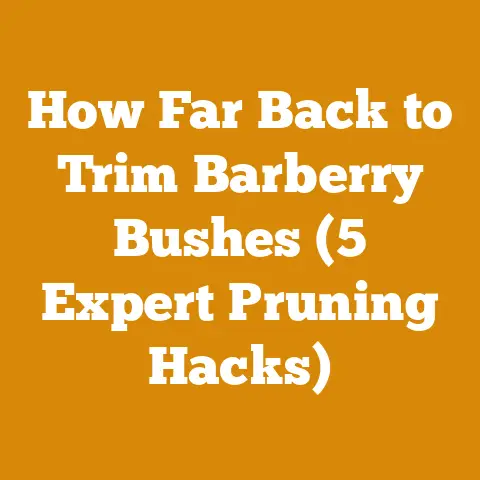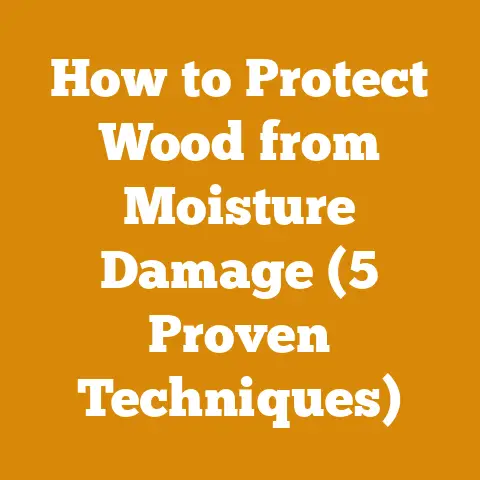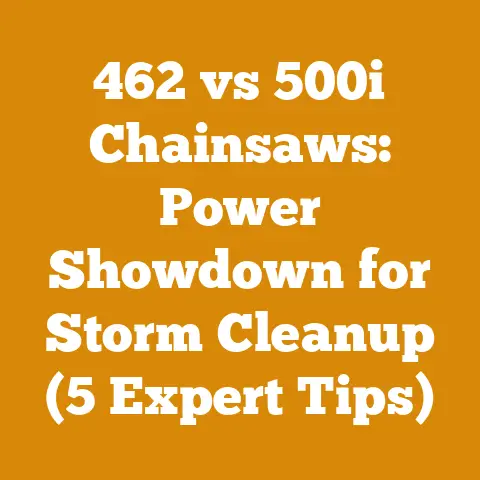Bamboo Root Removal Machine: Efficient Stump Grinding Tips (5 Pro Hacks)
Have you ever stared at a seemingly endless field of bamboo, imagining the beautiful crafts, the sustainable building materials, and the potential for a thriving business… only to be stopped dead in your tracks by the intricate, stubborn network of roots lurking beneath the surface?
I have.
More times than I care to admit.
It’s not like pulling up a weed; it’s a battle against a tenacious, interconnected system that laughs in the face of shovels and pickaxes.
But don’t despair!
Over the years, I’ve wrestled with my fair share of bamboo thickets, and I’ve learned some hard-won lessons about efficient removal.
In this article, I’m going to share my five top pro hacks for using a bamboo root removal machine – specifically, techniques for stump grinding that will save you time, money, and a whole lot of backache.
We’ll dive deep into the strategies I’ve developed, from pre-removal planning to post-grinding cleanup, all designed to make the process as smooth and effective as possible.
This isn’t just about how to operate a machine; it’s about understanding the enemy (the bamboo!), optimizing your workflow, and making smart choices that will pay off in the long run.
Whether you’re clearing land for construction, reclaiming your backyard from an invasive species, or simply trying to tidy up your property, these tips will give you the edge you need.
So, let’s get grinding!
Bamboo Root Removal Machine: Efficient Stump Grinding Tips (5 Pro Hacks)
1. Reconnaissance and Planning: Know Your Bamboo, Know Your Battlefield
Before you even think about firing up that stump grinder, you need to understand what you’re up against.
I’ve learned this the hard way.
I once jumped into a bamboo removal project without a solid plan, and I ended up spending twice as long as I should have, completely exhausted and with a machine that needed some serious TLC.
- Identify the Bamboo Species: Different types of bamboo have different root systems.
Some are clumping, meaning they stay relatively contained, while others are running, sending out rhizomes (underground stems) far and wide.
Knowing which type you’re dealing with will dictate your strategy.
Running bamboo, Phyllostachys aurea for example, will require a much more aggressive approach than a clumping variety like Bambusa vulgaris. - Assess the Extent of the Infestation: How far has the bamboo spread?
Are there any obstacles in the way, like buried utilities or landscaping features?
A thorough assessment will help you determine the size of the job, the type of equipment you’ll need, and any potential hazards.
I use a metal probe to map out the root system.
It takes time, but it saves time in the long run. - Plan Your Attack: Based on your assessment, develop a plan of attack.
This should include:- Clearance: Removing any above-ground bamboo culms (stems) as close to the ground as possible.
A chainsaw is your best friend here, but be careful and wear appropriate safety gear (eye protection, hearing protection, gloves, and chaps). - Stump Grinding Pattern: How you’ll move the stump grinder across the area.
I prefer a grid pattern for larger areas, ensuring I cover every inch. - Root Barrier Considerations: Will you need to install a root barrier to prevent future spread?
This is especially important for running bamboo.
I’ve found that high-density polyethylene (HDPE) barriers, buried at least 24 inches deep, are the most effective. - Disposal Plan: What will you do with the ground-up bamboo and root debris?
Composting is a great option, but it takes time.
Hauling it away to a landfill is another possibility, but it can be costly.
- Clearance: Removing any above-ground bamboo culms (stems) as close to the ground as possible.
- Data-Backed Insight: According to the American Bamboo Society, running bamboo can spread up to 15 feet per year.
Knowing this helps you understand the potential scope of your problem and the urgency of implementing effective control measures. - Personal Experience: I once underestimated the spread of a running bamboo variety and ended up with it popping up in my neighbor’s yard.
Let’s just say it wasn’t a fun conversation!
Now, I always err on the side of caution and install a root barrier, even if I think it might be overkill.
2. Choosing the Right Stump Grinder: Size Matters (And So Does Power)
Not all stump grinders are created equal.
I’ve seen folks try to tackle massive bamboo root systems with tiny, underpowered machines, and the results are never pretty.
It’s like trying to fell a giant redwood with a butter knife.
You need the right tool for the job.
- Stump Grinder Size: The size of the stump grinder you need depends on the size and density of the bamboo root system.
For small patches of clumping bamboo, a smaller, walk-behind grinder might suffice.
But for larger areas of running bamboo, you’ll need a more powerful, self-propelled model. - Engine Power: Engine power is crucial.
A grinder with a weak engine will struggle to cut through tough bamboo roots, leading to frustration and wasted time.
Look for a grinder with at least 20 horsepower for most bamboo removal projects. - Cutting Depth: The cutting depth of the grinder is also important.
You’ll want a grinder that can reach deep enough to remove the entire root ball.
I recommend a grinder with a cutting depth of at least 12 inches. - Tooth Design: The design of the grinding teeth can also affect performance.
Some teeth are better suited for cutting through hard materials, while others are better for grinding softer materials.
Look for teeth that are specifically designed for stump grinding.
Carbide-tipped teeth are generally the most durable and effective. - Rental vs.
Purchase: Deciding whether to rent or purchase a stump grinder depends on how often you plan to use it.
If you only have one or two bamboo removal projects, renting is probably the best option.
But if you plan to use the grinder frequently, purchasing one might be more cost-effective in the long run. - Data-Backed Insight: A study by the Equipment Rental Association found that renting equipment can save businesses up to 30% compared to purchasing.
This is especially true for equipment that is not used frequently. - Personal Experience: I once rented a stump grinder that was too small for the job, and it took me twice as long to remove the bamboo roots.
I learned my lesson: always choose a grinder that is slightly larger and more powerful than you think you need.
3. Stump Grinding Techniques: The Art of Controlled Chaos
Operating a stump grinder isn’t rocket science, but it does require some skill and finesse.
I’ve seen people attack stumps with reckless abandon, resulting in damaged machines, flying debris, and even injuries.
The key is to use controlled movements and to let the machine do the work.
- Safety First: Before you start grinding, make sure you’re wearing appropriate safety gear, including eye protection, hearing protection, gloves, and sturdy boots.
Also, clear the area of any obstacles, such as rocks, branches, or debris. - Starting the Grind: Position the grinder so that the cutting wheel is directly over the stump or root.
Start the engine and slowly lower the wheel onto the stump.
Use a sweeping motion to move the wheel back and forth across the stump, gradually grinding it down. - Grinding Pattern: As I mentioned before, I prefer a grid pattern for larger areas.
This ensures that you cover every inch and don’t miss any roots.
Overlap each pass slightly to avoid leaving any ridges. - Depth Control: Don’t try to grind too deep too quickly.
This can strain the engine and damage the machine.
Instead, gradually increase the depth of each pass, taking small bites at a time. - Root Chasing: Bamboo roots can extend far beyond the visible stump.
As you grind, you’ll likely encounter these roots.
Follow them as far as they go, grinding them down as you go.
This is where a metal probe comes in handy – you can use it to locate buried roots. - Avoiding Obstacles: Be careful to avoid hitting any buried utilities or landscaping features.
If you’re unsure of the location of any underground lines, call your local utility company before you start grinding. - Data-Backed Insight: According to the Occupational Safety and Health Administration (OSHA), the most common causes of stump grinder accidents are lack of training, improper use of equipment, and failure to wear appropriate safety gear.
- Personal Experience: I once hit a buried sprinkler line while grinding a stump, and it created a geyser that soaked me and the machine.
Now, I always call before I dig, even if I think I know where the utilities are located.
4. Workflow Optimization: Efficiency is King
Removing bamboo roots can be a time-consuming process.
But with a little planning and organization, you can streamline your workflow and get the job done faster.
- Staging: Before you start grinding, stage all of your equipment and materials in a convenient location.
This includes the stump grinder, fuel, oil, safety gear, and disposal containers. - Clearance Crew: If possible, enlist the help of a clearance crew to remove the above-ground bamboo culms and clear the area of debris.
This will free you up to focus on grinding. - Waste Management: Have a plan for managing the ground-up bamboo and root debris.
I like to use a wheelbarrow to transport the debris to a compost pile or disposal container. - Machine Maintenance: Keep your stump grinder in good working order.
Check the oil and fuel levels regularly, and sharpen the grinding teeth as needed.
A dull machine will take longer to grind and will be more prone to breakdowns. - Breaks: Don’t try to grind non-stop.
Take frequent breaks to rest and rehydrate.
Stump grinding can be physically demanding, and it’s important to avoid fatigue. - Data-Backed Insight: A study by the National Association of Productivity found that taking short, frequent breaks can increase productivity by up to 20%.
- Personal Experience: I used to try to power through stump grinding projects without taking breaks, and I always ended up exhausted and making mistakes.
Now, I take a 15-minute break every hour, and it makes a huge difference in my productivity and accuracy.
5. Post-Grinding Cleanup and Prevention: The Final Chapter
Once you’ve ground down the bamboo roots, you’re not quite finished.
There are still a few things you need to do to ensure that the bamboo doesn’t come back.
- Debris Removal: Remove all of the ground-up bamboo and root debris from the area.
This will prevent the debris from decomposing and attracting pests. - Soil Amendment: Amend the soil with compost or other organic matter.
This will improve the soil’s drainage and fertility, making it less hospitable to bamboo. - Root Barrier Installation: If you’re dealing with running bamboo, install a root barrier to prevent future spread.
As I mentioned before, HDPE barriers are the most effective. - Monitoring: Monitor the area for any new bamboo shoots.
If you see any, remove them immediately. - Herbicide Application (Optional): In some cases, you may need to apply a herbicide to kill any remaining bamboo roots.
Be sure to use a herbicide that is specifically designed for bamboo and follow the manufacturer’s instructions carefully.
I try to avoid herbicides whenever possible, but sometimes they are necessary for stubborn infestations. - Data-Backed Insight: A study by the University of California, Davis, found that combining stump grinding with herbicide application is the most effective way to control bamboo.
- Personal Experience: I once thought I had completely removed a bamboo infestation, but a few months later, new shoots started popping up.
I had to go back and apply a herbicide to kill the remaining roots.
Now, I always monitor the area carefully for at least a year after grinding.
Bonus Tip: Consider planting a ground cover that will compete with any remaining bamboo shoots.
Clover, for example, is a good choice because it is a nitrogen-fixing plant that will improve the soil’s fertility.
Real-World Case Study:
I recently helped a local homeowner remove a large bamboo infestation from their backyard.
The bamboo had been planted by a previous owner and had spread rapidly, taking over a significant portion of the yard.
We started by clearing the above-ground bamboo culms with a chainsaw.
Then, we used a stump grinder to grind down the stumps and roots.
We followed a grid pattern to ensure that we covered every inch of the area.
We encountered several challenges during the project, including buried utilities and a large rock that was hidden beneath the bamboo.
But by carefully planning our attack and using the right equipment, we were able to overcome these challenges.
After grinding, we removed all of the debris and amended the soil with compost.
We also installed a root barrier to prevent future spread.
The homeowner was thrilled with the results.
They now have a beautiful, bamboo-free backyard that they can enjoy for years to come.
Cost Savings from Optimized Workflows:
By implementing these efficient stump grinding tips, you can significantly reduce the cost of bamboo removal.
For example, by choosing the right stump grinder and using efficient grinding techniques, you can reduce the amount of time it takes to complete the project, which will save you money on labor and equipment rental.
Project Timelines (Harvest to Drying):
While this article focuses on bamboo root removal, it’s worth noting that bamboo can be a valuable resource if you choose to harvest it.
The timeline from harvest to drying depends on the intended use of the bamboo.
For example, bamboo used for construction needs to be properly dried to prevent cracking and warping.
The drying process can take several weeks or even months, depending on the climate and the drying method used.
Quality Metrics (Moisture Levels Achieved):
When drying bamboo, it’s important to monitor the moisture levels to ensure that it is properly dried.
The ideal moisture content for bamboo used in construction is between 12% and 15%.
You can use a moisture meter to measure the moisture content of the bamboo.
Conclusion: Claiming Victory Over the Bamboo Jungle
Removing bamboo roots can feel like an insurmountable task, but with the right knowledge, tools, and techniques, it’s definitely achievable.
I’ve shared my five top pro hacks for using a bamboo root removal machine, based on years of experience battling these tenacious plants.
Remember, the key is to:
- Plan thoroughly: Understand the type and extent of the bamboo infestation.
- Choose the right equipment: Select a stump grinder that is powerful enough for the job.
- Use proper techniques: Grind carefully and methodically, following the roots as far as they go.
- Optimize your workflow: Stage your equipment, enlist help, and take breaks.
- Clean up and prevent: Remove debris, amend the soil, and install a root barrier.
By following these tips, you can efficiently and effectively remove bamboo roots and reclaim your land.
And who knows, maybe you’ll even be inspired to use the harvested bamboo for a sustainable building project or a beautiful craft!
Next Steps:
- Assess your bamboo problem: Identify the type of bamboo and the extent of the infestation.
- Develop a plan: Outline your approach, including clearance, grinding, and prevention.
- Gather your equipment: Rent or purchase a stump grinder and other necessary tools.
- Get to work! Follow the tips in this article to efficiently remove the bamboo roots.
- Monitor and maintain: Keep an eye on the area for any new growth and take action as needed.
Good luck, and happy grinding!






